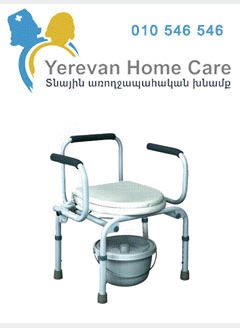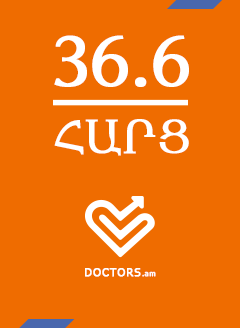Gaucher's disease is a genetic disease in which a fatty substance (lipid) accumulates in cells and certain organs. Gaucher's disease is the most common of the lysosomal storage diseases. The disorder is characterized by bruising, fatigue, anemia, low blood platelets, and enlargement of the liver and spleen. It is caused by a hereditary deficiency of the enzyme glucosylceramidase. The disease is caused by a recessive mutation in a gene located on chromosome 1 and affects both males and females. About 1 in 100 people in the United States are carriers of the most common type of Gaucher disease, while the carrier rate among Ashkenazi Jews is 8.9% while the birth incidence is 1 in 450. The disease is named after the French doctor Philippe Gaucher, who originally described it in 1882.
Classification
Gaucher's disease has three common clinical subtypes.
Type I (or non-neuropathic type) is the most common form of the disease, occurring in approximately 1 in 50,000 live births. It occurs most often among persons of Ashkenazi Jewish heritage. Symptoms may begin early in life or in adulthood and include enlarged liver and grossly enlarged spleen (together hepatosplenomegaly); the spleen can rupture and cause additional complications. Skeletal weakness and bone disease may be extensive. Spleen enlargement and bone marrow replacement cause anemia, thrombocytopenia and leukopenia. The brain is not affected pathologically, but there may be lung and, rarely, kidney impairment. Patients in this group usually bruise easily (due to low levels of platelets) and experience fatigue due to low numbers of red blood cells. Depending on disease onset and severity, type 1 patients may live well into adulthood. Many patients have a mild form of the disease or may not show any symptoms.
Type II (or acute infantile neuropathic Gaucher's disease) typically begins within 6 months of birth and has an incidence rate of approximately 1 in 100,000 live births. Symptoms include an enlarged liver and spleen, extensive and progressive brain damage, eye movement disorders, spasticity, seizures, limb rigidity, and a poor ability to suck and swallow. Affected children usually die by age 2.
Type III (the chronic neuropathic form) can begin at any time in childhood or even in adulthood, and occurs in approximately 1 in 100,000 live births. It is characterized by slowly progressive but milder neurologic symptoms compared to the acute or type 2 version. Major symptoms include an enlarged spleen and/or liver, seizures, poor coordination, skeletal irregularities, eye movement disorders, blood disorders including anemia and respiratory problems. Patients often live into their early teen years and adulthood.
Signs and symptoms
Painless hepatomegaly and splenomegaly: the size of the spleen can be 1500-3000 ml, as opposed to the normal size of 50-200 ml. Splenomegaly may decrease the affected individual's capacity for eating by exerting pressure on the stomach. While painless, enlargement of spleen increases the risk of splenic rupture.
Hypersplenism and pancytopenia: the rapid and premature destruction of blood cells, leading to anemia, neutropenia, leukopenia, and thrombocytopenia (with an increased risk of infection and bleeding).
Cirrhosis of the liver is rare
Severe pain associated with joints and bones, frequently presenting in hips and knees.
Neurological symptoms occur only in some types of Gaucher's (see below):
Type II: serious convulsions, hypertonia, mental retardation, apnea.
Type III: muscle twitches known as myoclonus, convulsions, dementia, ocular muscle apraxia.
Osteoporosis: 75% develop visible bony abnormalities due to the accumulated glucosylceramide. A deformity of the distal femur in the shape of an Erlenmeyer flask is commonly described (aseptic necrosis of the femur joint).
Yellowish-brown skin pigmentation.
Genetics
The three types of Gaucher's disease are inherited in an autosomal recessive fashion. Both parents must be carriers in order for a child to be affected. If both parents are carriers, there is a one in four, or 25%, chance with each pregnancy for an affected child. Genetic counseling and genetic testing is recommended for families who may be carriers of mutations.
Each type has been linked to particular mutations. In all, there are about 80 known mutations, grouped into three main types:
Type I (N370S homozygote), the most common, also called the "non-neuropathic" type occurs mainly in Ashkenazi Jews, at 100 times the occurrence in the general populace. The median age at diagnosis is 28 years of age, and life expectancy is mildly decreased.There are no neurological symptoms.
Type II (1 or 2 alleles L444P) is characterized by neurological problems in small children. The enzyme is hardly released into the lysosomes. Prognosis is poor: most die before the age of 3.
Type III (also 1-2 copies of L444P, possibly delayed by protective polymorphisms) occurs in Swedish patients from the Norrbotten region. This group develops the disease somewhat later, but most die before their 30th birthday.
Diaz et al. suggest that the Gaucher-causing mutations entered the Ashkenazi Jewish gene pool in the early Middle Ages (48-55 generations ago).
Treatment
For type 1 and most type 3 patients, enzyme replacement treatment with intravenous recombinant glucocerebrosidase (imiglucerase) can dramatically decrease liver and spleen size, reduce skeletal abnormalities, and reverse other manifestations. This treatment costs approximately US$200,000 annually for a single patient and should be continued for life. The rarity of the disease means that dose-finding studies have been difficult to conduct, so there remains controversy over the optimal dose and dosing frequency.Due to the low incidence, this has become an orphan drug in many countries, meaning that a government recognizes and accommodates the financial constraints that limit research into drugs that address a small population. Velaglucerase alfa was approved by the Food and Drug Administration (FDA) as an alternative treatment in February 2010. In May 2012 the FDA approved an additional treatment – Taliglucerase alfa, or Elelyso.
Successful bone marrow transplantation cures the non-neurological manifestations of the disease, because it introduces a monocyte population with active beta-glucosidase. However, this procedure carries significant risk and is rarely performed in Gaucher patients. Surgery to remove the spleen (splenectomy) may be required on rare occasions if the patient is anemic or when the enlarged organ affects the patient’s comfort. Blood transfusion may benefit some anemic patients. Other patients may require joint replacement surgery to improve mobility and quality of life. Other treatment options include antibiotics for infections, antiepileptics for seizures, bisphosphonates for bone lesions, and liver transplants. Substrate reduction therapy may prove to be effective in stopping Type 2, as it can cross through the blood barrier into the brain. There is currently no effective treatment for the severe brain damage that may occur in patients with types 2 and 3 Gaucher disease. Gene therapy may be a future step.
Gaucher's disease has recently become a target for more than one effort at pharmacological chaperoning, which involves the use of orally administered drugs that operate at a molecular level. Miglustat is one of these oral drugs. It was approved for the treatment of this disease in 2003. As of June 2009, another oral drug, isofagomine tartrate, is under development.












